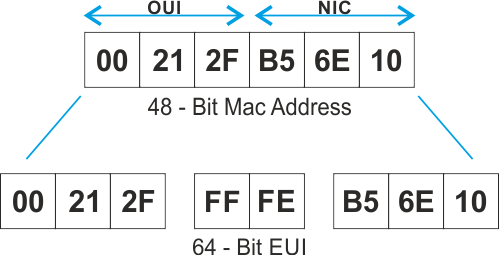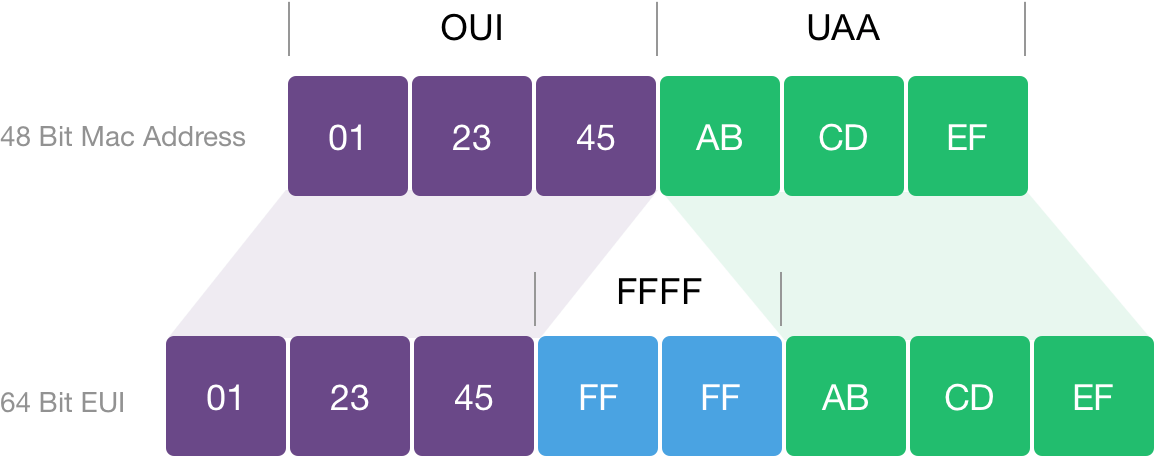

- #48 BIT VS 64 BIT MAC ADDRESS HOW TO#
- #48 BIT VS 64 BIT MAC ADDRESS FULL#
- #48 BIT VS 64 BIT MAC ADDRESS CODE#
The Wikipedia article on MAC addresses explains: This is where it starts to get really fuzzy.

The old MAC-48 is now called EUI-48, but they also have EUI-64 as a way of expressing a MAC address. But the specs have been updated by the IEEE consortium. Makes sense, since we know now that it has 48 bits. What we’re used to seeing as a MAC address, 12 digits with 16 possible values for each one, is called a MAC-48 identifier. Very proud of my little self.īack at the beginning of this story, I said that Bart was right but that DJ and Kevin were more right. I ran in and told Steve, I called both Lindsay and Kyle, I even called my brother in Boston to tell him.
#48 BIT VS 64 BIT MAC ADDRESS FULL#
I have been marching around all full of myself all week because of this.
#48 BIT VS 64 BIT MAC ADDRESS HOW TO#
I have seriously not taken a single log since I graduated from engineering school 37 years ago! I’m seriously amazed that I not only knew how to do a log, but that I knew instantly that they could solve this kind of tough problem. Calculator (or Excel) tells us x = 48!īefore we rejoice in Kevin and DJ being right about 48 bits, let’s for just a moment revel in the fact that I pulled logarithms out of the very dustiest parts of my brain. Dividing both sides by log 2, we get x = 12 log 16 divided by log 2. Another cool thing about logarithms is you can tear that exponent inside the log, and off and shove it down in front of the log. So our equation because log 2 to the x = log 16 to the 12. You know how you can multiply or divide both sides of an equation and it’s still true? Turns out you can take the logarithm of both sides and it’s still true. To figure out how many bits are in a MAC address, the equation becomes 2 to the x = 16 to the 12. Still with me? The next part is my favorite part of the story. That means the number of possible outcomes is 16 raised to the power of 12. That’s 16 possible outcomes for each digit. What about this MAC address thing? As Bart explained last week, MAC addresses have 12 digits, where each digit can be 0-9 and a-f. Now that we can calculate how many bits we have where there’s only 1s and 0s. So 3 coins is 2 raised to the power of 3. What about 3 coins or bits? It turns out the answer is 2 to the power of however many of them you have. Same thing with bits, they’re 1 or 0 so two possible outcomes with one bit. A coin has heads and tails, so two possible outcomes. He explained bit by talking through flipping of a coin. I know I should already know this and I explained to him that he’s just the next in a long line of people attempting to get it to stick in my brain, but he said he was determined to get me to understand.

Bart first had to explain to me what bits were. First of all, Bart wasn’t technically wrong, but DJ and Kevin are more specifically correct.īecause Bart and I are nerds, we decided to work out the answer, and actually “do the math” and see if they’re right that MAC addresses are 48 bits not 64 bits.

#48 BIT VS 64 BIT MAC ADDRESS CODE#
Now this is going to sound a bit like explaining the tax code but I hope you’ll bear with me because there are a couple of parts here I think are interesting. They both explained that MAC addresses as we are used to seeing them, are 48 bits, not 64 bits. This is conveniently the length of a MAC address. In IPv6, the host part is always 64bits long. Seriously,Īnyway, they were both commenting on this statement: As always though, Bart is weird in that he actually likes to be corrected. One of the rules of this episode was that Bart only had a few days to learn the background himself so it was expected there might be errors. After the show aired, Kevin Jones DM’d me on Twitter and DJ made a comment on the blog, both with the same correction. In last week’s Chit Chat Across the Pond, I asked Bart to come during his off season to explain IPv6 to us.


 0 kommentar(er)
0 kommentar(er)
